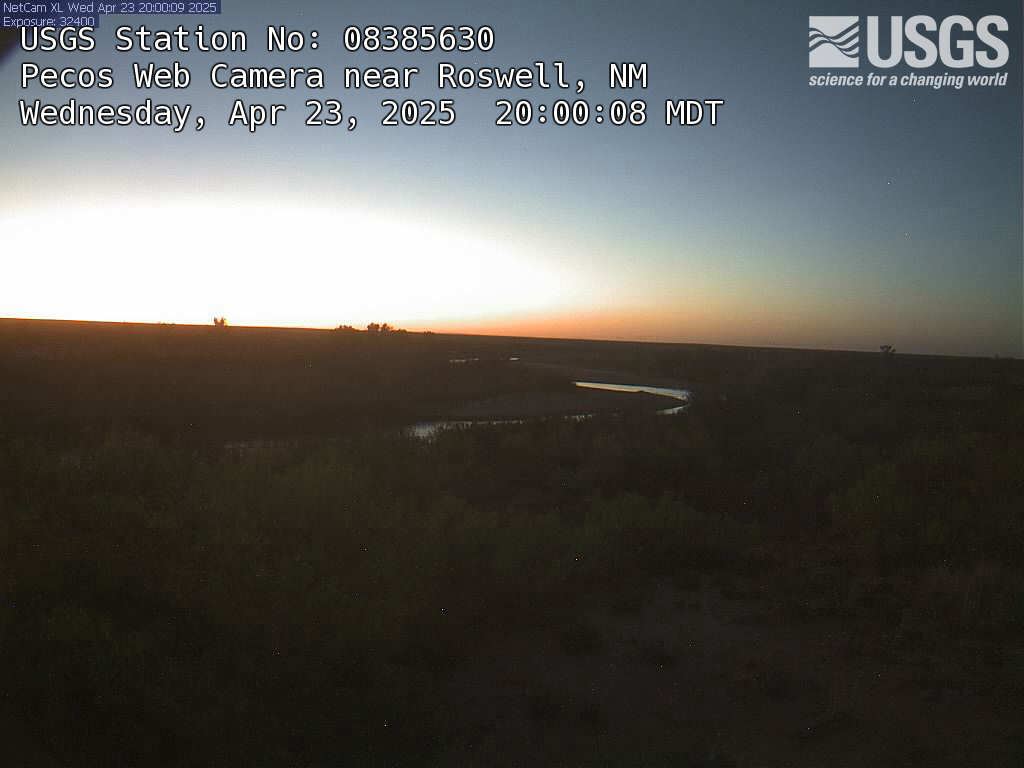Pecos River, NM Weather Cams
Pecos River near Roswell, NM

USGS Cam Pecos River near Acme, NM

The Lifeblood of the Southwest: A History of the Pecos River
Pecos River, NM Weather Cams. Winding its way through the rugged terrain of eastern New Mexico, the Pecos River has played a vital role in the region’s history for centuries. This legendary waterway, stretching over 926 miles from its headwaters in the Sangre de Cristo Mountains to its confluence with the Rio Grande, has been a lifeline for Native American tribes, Spanish explorers, and modern-day communities alike.
The Pecos River’s origins can be traced back to the indigenous peoples who inhabited the Southwest long before European colonization. The Puebloan cultures, such as the Anasazi and the Mogollon, were among the first to settle along the river’s banks, utilizing its waters for irrigation and sustenance. The river’s name itself is derived from the Spanish word “peces,” meaning fish, a nod to the abundant aquatic life that once thrived in its waters.
In the 16th century, the arrival of Spanish conquistadors marked a new chapter in the Pecos River’s history. Explorers like Francisco Vásquez de Coronado and Juan de Oñate followed the river’s course, seeking new territories and resources. The Pecos River served as a vital source of water for these expeditions, enabling the establishment of settlements and missions along its path.
One of the most significant legacies of the Spanish presence in the region is the Pecos Pueblo, a historic site located near the river’s banks. This ancient pueblo, once home to the Pueblo people, was a thriving community that existed for centuries before the Spanish arrival. The Pecos Pueblo served as a major trading hub, with the river facilitating the exchange of goods between various tribes and later, the Spanish colonists.
As the American West began to open up in the 19th century, the Pecos River played a crucial role in the development of the region. The Santa Fe Trail, a historic trade route connecting Missouri to Santa Fe, followed the river’s course for a significant portion of its journey. Traders, settlers, and pioneers relied on the Pecos River for water and sustenance as they traversed the rugged landscape.
The discovery of mineral resources, such as gold and silver, in the area surrounding the Pecos River further fueled exploration and settlement. Mining towns sprang up along the river’s banks, attracting prospectors and entrepreneurs seeking their fortunes in the rugged terrain.
In the 20th century, the Pecos River’s importance shifted towards agriculture and water management. The construction of dams and irrigation systems allowed for the cultivation of crops in the arid regions of eastern New Mexico. The Pecos River became a vital source of water for farming communities, supporting the growth of industries like cotton, alfalfa, and cattle ranching.
However, the river’s history has not been without its challenges. Overuse and drought conditions have led to periods of low water levels, impacting both agriculture and wildlife habitats. Conservation efforts and water management strategies have been implemented to protect the Pecos River and ensure its sustainability for future generations.
Today, the Pecos River continues to play a significant role in the region’s economy and culture. Recreational activities like fishing, rafting, and kayaking have become popular along its banks, attracting outdoor enthusiasts from around the world. The river’s scenic beauty and rich history have also made it a draw for tourists, with numerous state parks and historical sites dotting its course.
Moreover, the Pecos River holds deep cultural significance for the Native American tribes who have called this region home for centuries. The river is revered as a sacred waterway, with many traditional ceremonies and rituals still being practiced along its banks.
As the Southwest continues to grow and evolve, the Pecos River stands as a testament to the resilience and adaptability of the region’s inhabitants. From the ancient Puebloan cultures to the Spanish explorers and modern-day communities, this legendary waterway has witnessed the ebb and flow of human history, serving as a lifeline and a source of inspiration for all who have called its banks home.
For more information, visit the official Roswell, New Mexico website.
